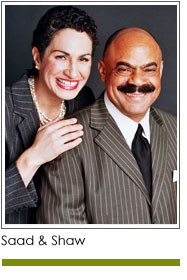 In our last column we asked you to reflect on your fundraising for the past year and to record your answers to three questions: What have you done well, which activities or strategies didn’t meet expectations, and were your goals realistic. In anticipation of the coming year, we suggest you use the wisdom gained from your reflections to lay the groundwork for 2014.
In our last column we asked you to reflect on your fundraising for the past year and to record your answers to three questions: What have you done well, which activities or strategies didn’t meet expectations, and were your goals realistic. In anticipation of the coming year, we suggest you use the wisdom gained from your reflections to lay the groundwork for 2014.
#1. Lead with your strengths. As you anticipate your fundraising activities for 2014 build on those things you did well in 2013. If special events are the revenue driver for your nonprofit, stay with that. Find incremental ways to build on what is already in place. In order to protect your nonprofit’s revenue in the future, make sure you also allocate time and resources to building other fundraising programs. For example, to grow your individual giving program you can begin identifying and following up with individuals who attend your events to determine which donors and underwriters are interested in other forms of giving and engagement. If your nonprofit has built a strong annual campaign, allocate time and resources to identifying potential major donors and deploying strategies designed to engage them in higher levels of giving.
#2. Rethink strategies that didn’t meet expectations. Not every fundraising strategy is a success the first time you work with it. If there are strategies that worked that well in 2013, review your reflection notes, and discuss the challenges and potential adjustments with other members of your fundraising team. Identify changes for 2014. Consider setting “check points” – times during the year when you will review the strategy, your progress, the extent to which the identified changes are being implemented, and whether or not they are effective. You may find that your changes can increase revenue. You may determine the strategy is not one that should be pursued, even with the modifications.
#3. Make sure your fundraising plan includes timeframes, roles and responsibilities, and a budget. Too often a fundraising plan is a wish and a prayer. Goals are identified, but the people, time and money required to achieve the goals are unavailable. If your nonprofit wants to “ramp up” its fundraising, it will need to ramp up its investment as well. Take the time to determine who will be responsible for taking the lead in ensuring specific goals are met within an agreed upon timeframe. Write up responsibilities for all team members. Create a budget and ensure the funds are allocated.
Upcoming columns will focus on the prerequisites for fundraising success – the 18 things we have learned through our work that are the foundation of a strong fundraising program. As you prepare for 2014 take some time to read our two books: they are available on Amazon.com, easy to read, and written for you.
Merry Christmas!
Copyright 2013 – Mel and Pearl Shaw
Mel and Pearl Shaw are the authors of “Prerequisites for Fundraising Success.” They position nonprofits for fundraising success. Visit them at www.saadandshaw.com.











